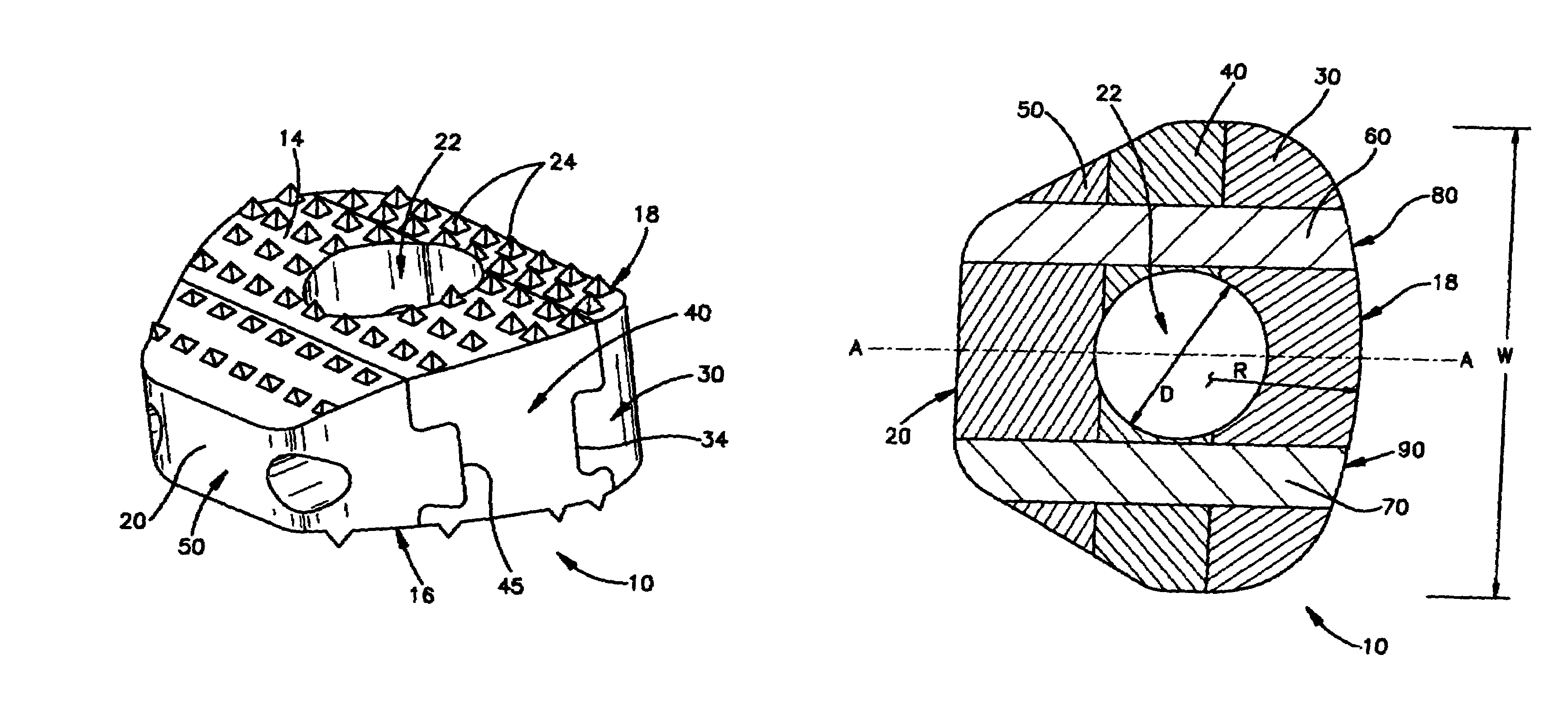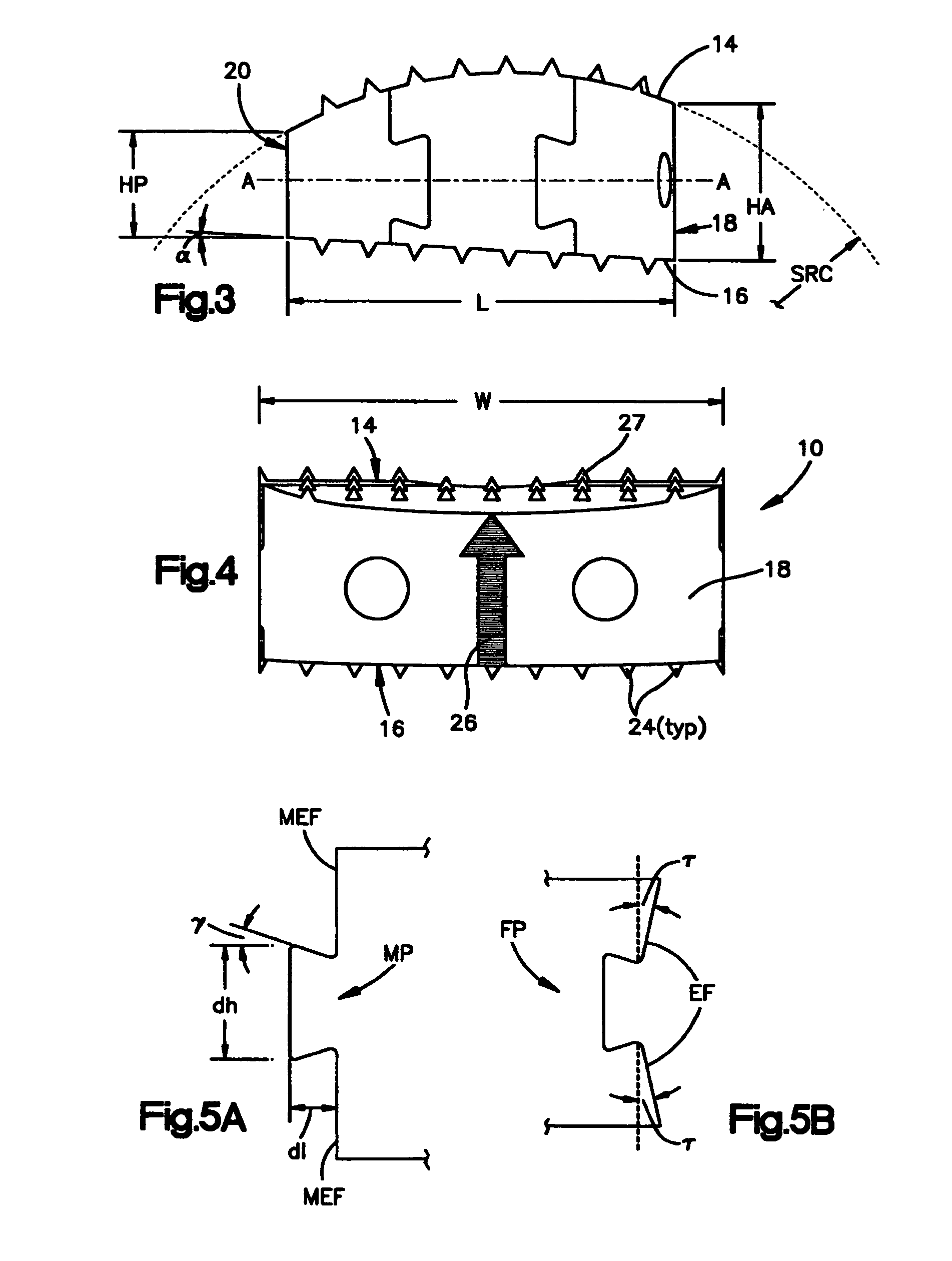Allograft implant
a technology of intervertebral implants and stents, which is applied in the field of allogenic implants, can solve the problems of inconvenient insertion of vertebral endplates, inconvenient use, and difficulty in achieving the effect of maximizing the opening siz
- Summary
- Abstract
- Description
- Claims
- Application Information
AI Technical Summary
Benefits of technology
Problems solved by technology
Method used
Image
Examples
Embodiment Construction
[0062]FIGS. 1-4 show a first embodiment of an intervertebral cortical allograft implant 10 according to the present invention. Implant 10 preferably is shaped to conform in size and shape with at least a portion of the end plates of the vertebrae between which implant 10 is to be inserted. The outer periphery of implant 10 may be sized and shaped to match the outer periphery of the end plates of the vertebrae between which the implant 10 is to be used. Alternatively the outer periphery of the implant 10 may be sized and shaped to match only a portion of the outer periphery of the end plates of the vertebrae, or it may have an outer periphery that may not match the peripheral shape of the end plates of the vertebrae at any location.
[0063]Implant 10 generally comprises a superior surface 14, an inferior surface 16, an anterior face 18, a posterior face 20 and an opening 22. The implant 10 may be substantially symmetrical about a central axis “A-A” which connects and bisects the anteri...
PUM
 Login to View More
Login to View More Abstract
Description
Claims
Application Information
 Login to View More
Login to View More - R&D
- Intellectual Property
- Life Sciences
- Materials
- Tech Scout
- Unparalleled Data Quality
- Higher Quality Content
- 60% Fewer Hallucinations
Browse by: Latest US Patents, China's latest patents, Technical Efficacy Thesaurus, Application Domain, Technology Topic, Popular Technical Reports.
© 2025 PatSnap. All rights reserved.Legal|Privacy policy|Modern Slavery Act Transparency Statement|Sitemap|About US| Contact US: help@patsnap.com



